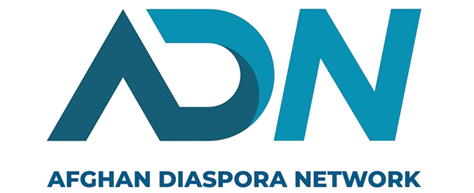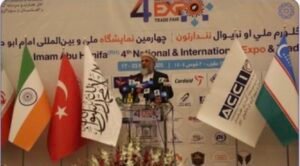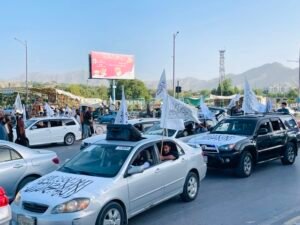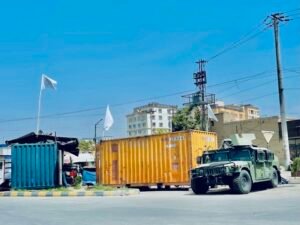The Afghan Opium Ban and Pakistan’s Growing Role in Narcotics Networks

Farmers in southern Uruzgan province collecting the opium harvest in 2015. Photo: @Ali Ahmad
By Rahmatullah Achakzai
In August 2021, when the Taliban took control of Afghanistan, the global community prepared for a resurgence of familiar crises-human rights violations, institutional breakdowns, regional turmoil, and the re-emergence of extremist groups. However, few foresaw that one of the most significant actions by the new regime would be a comprehensive ban on opium poppy cultivation, which has historically supported Afghanistan’s rural economy and served as a crucial element in the global heroin supply chain. According to a recent report from the UN Office on Drugs and Crime (UNODC), published on November 6, 2025, opium cultivation this year spanned 10,200 hectares, a decrease from 12,800 hectares in 2024 and significantly lower than the 232,000 hectares recorded prior to the ban.
The production of opium has plummeted even more dramatically, dropping nearly a third to 296 tons, while farmers’ earnings from opium sales have nearly halved during this timeframe. Georgette Gagnon, the Deputy Special Representative of the Secretary-General for Afghanistan and the Officer-in-Charge of the UN political mission in the country (UNAMA), emphasizes that the issue transcends Afghanistan’s borders:
“The dynamics of supply, demand, and trafficking involve both Afghan and international actors. Tackling this challenge necessitates cooperation among key stakeholders.”1
The collapse of the Afghan government has triggered a geopolitical shockwave with repercussions that reach far beyond Afghanistan itself. The most significant effects are felt in Pakistan, where segments of the military establishment and the Inter-Services Intelligence (ISI) have historically depended on Afghan narcotics as a parallel revenue stream. This illicit income has been crucial for financing jihadist factions, supporting covert operations, and enriching high-ranking officials.2 The abrupt loss of Afghan opium has not only disturbed an illegal market; it has also dismantled a political economy that has been foundational to Pakistan’s regional strategy for many years.
To grasp the scale of this transformation, it is essential to revisit the roots of Pakistan’s narcotics connection. Following the Soviet invasion of Afghanistan in 1979, Western intelligence evaluations including those from the U.S. Congressional Research Service (CRS) have chronicled how Pakistan evolved into both a conduit and a beneficiary of the Afghan heroin surge.3 What initially served as a Cold War strategy has developed into a deeply entrenched system where drug revenues traversed Pakistan’s tribal areas, ports, and banking systems, funding militant groups such as Lashkar-e-Taiba (LeT), Jaish-e-Mohammed (JeM), and the Haqqani Network. Researchers like Gretchen Peters (in her work ‘Seeds of Terror’) have illustrated how profoundly the drug trade has become woven into Pakistan’s security framework, obscuring the distinctions between state entities, non-state actors, and criminal organizations.
For many years, the architecture of this trade relied heavily on a consistent supply of Afghan opium. However, when the Taliban imposed a sudden ban, Pakistan’s deep state faced an unprecedented financial crisis. Within a few months, reports began to surface through UNODC field observations, South Asian law enforcement agencies, and independent analysts indicate that Pakistan was re-establishing its narcotics pipeline within its own territory. This transition has been evident in two significant ways: a swift increase in domestic poppy farming and a perilous shift towards synthetic drugs.4
The resurgence of poppy cultivation in Pakistan is remarkable. Regions such as Khyber Pakhtunkhwa, the former tribal areas, and parts of Balochistan have seen a rise in opium production, often under the protection or tacit approval of local militant groups historically linked to the ISI. The state’s minimal oversight in these areas makes them prime candidates for reviving a trade that was once reliant on Afghan land. Currently, poppy fields account for up to 70% of the farmland in Duki and Gulistan, with over 8,100 hectares of poppy identified through high-resolution satellite imagery. Notably, these regions were nearly free of poppy cultivation prior to the Taliban’s resurgence. As noted by Jelena Bjelica, author of the Afghanistan Analysts Network (AAN) report, this information indicates that, for the first time, opium production in Pakistan could potentially exceed that of Afghanistan in the coming year.5
A more concerning development is Pakistan’s growing involvement in the methamphetamine trade. Unlike other drugs, methamphetamine production does not necessitate extensive agricultural land and is significantly easier to hide, making it a preferred option for criminal-terror networks aiming to fill the financial gap created by the collapse in Afghanistan. The European Monitoring Centre for Drugs and Drug Addiction (EMCDDA) has already noted an increase in methamphetamine shipments that either originate from or pass through Pakistan.6 Numerous European ports have intercepted cargo linked to networks that span Iran, Pakistan, and East Africa, signaling the rise of a transnational supply chain.
The 2021 heroin seizure at Mundra Port in India serves as a stark illustration of this shift, marking one of the largest heroin busts in history. Indian authorities managed to seize nearly 3,000 kilograms of heroin hidden within shipments of talc and gypsum that were imported from Afghanistan via Iran.7 An in depth investigation by India’s National Investigation Agency (NIA) revealed in court that the operation was masterminded by handlers based in Pakistan, with ties to Lashkar-e-Taiba, and was carried out under the supervision of individuals associated with the ISI. Court documents submitted to the NIA Special Court in Ahmedabad in 2023 unveiled a web of front companies, hawala operators, and communication networks connecting operatives in Pakistan, Afghanistan, and the United Arab Emirates. Rather than being a singular smuggling incident, the Mundra case unveiled a sophisticated framework aimed at facilitating terror financing through narcotics.
Kashmir is situated close to the infamous Golden Crescent, a region that encompasses parts of Afghanistan, Pakistan, and Iran. The human toll of this narco-terror operation is most starkly evident in the Kashmir Valley. In the last five years, the area has experienced a catastrophic rise in heroin addiction, which local authorities and medical professionals largely attribute to drugs smuggled in from Pakistan. A national survey conducted by India’s Ministry of Social Justice, along with local anti-narcotics agencies, estimates that over 67,000 young individuals in Kashmir are now dependent on heroin, with many resorting to intravenous use. Alarming reports published in the Indian Journal of Psychiatry corroborate this trend, while independent investigations by the BBC and Al Jazeera have highlighted the overwhelming pressure on hospitals in Srinagar, where hundreds of new heroin dependence cases are recorded weekly.8
This crisis is not a mere coincidence; it is part of a larger scheme where narcotics serve as tools of hybrid warfare. Just as Hezbollah is involved in the South American cocaine trade and ISIS utilizes synthetic drugs to finance its operations, Pakistan’s militant groups have leveraged heroin not only as a source of income but also as a means to erode the social structure of the regions they aim to destabilize. The Kashmiri youth ensnared in addiction are collateral damage in a strategy intended to undermine communities, create dependency, and diminish public resistance to radicalization.
The evolving situation in Europe is not merely a distant regional concern. The continent’s vulnerability to global narcotics flows, its susceptibility to extremist networks, and its reliance on secure maritime trade routes render Pakistan’s shift towards synthetic drugs a significant strategic issue. Europol and Interpol have consistently highlighted the emergence of the Arabian Sea-East Africa-Mediterranean corridor as a key route for heroin and methamphetamine trafficked from South Asia. In their annual threat assessments, European security agencies have observed an increasing involvement of criminal networks associated with Pakistani groups in meth distribution throughout Central and Southern Europe. Additionally, extremist organizations based in Pakistan, such as Lashkar-e-Taiba and Jaish-e-Mohammed, have established financial connections within Europe’s diaspora communities over the years, often utilizing informal money-transfer systems like hawala. Any alterations in their funding sources will inevitably impact European counter-terrorism efforts.9
The destabilization of South Asia also poses wider systemic repercussions for Europe. The Indian Ocean region, which facilitates a substantial portion of global energy supplies and trade, is already facing challenges from piracy, geopolitical tensions, and the spillover of conflicts. The rise of Pakistan as a center for narcotics associated with militant groups threatens to exacerbate these dangers. The relocation of the Afghan drug economy into Pakistan heightens the risk of new drug trafficking routes emerging through the Gulf, the Horn of Africa, and the Mediterranean-areas where European naval operations such as EMASOH and Operation Atalanta are already under strain.
For years, Pakistan’s political establishment has sought to portray itself to Western nations as a victim of terrorism, rather than as a supporter of it. This narrative has frequently found success, bolstered by Islamabad’s strategic position and its intermittent collaboration with Western military forces in Afghanistan. However, the Taliban’s surprising ban on opium has revealed a disquieting reality: Pakistan’s deep state has become structurally reliant on narcotics revenue in ways that can no longer be overlooked. The swift transition towards domestic poppy farming and the production of synthetic drugs highlights the resilience of a system designed to endure geopolitical upheavals.
References
- https://news.un.org/en/story/2025/11/1166286
- https://ddnews.gov.in/en/pakistans-parallel-terror-economy-narcotics-charities-and-counterfeit-cash/
- https://sgp.fas.org/crs/row/RL32686.pdf
- https://news.un.org/en/story/2025/11/1166286
- https://www.afghanistan-analysts.org/en/aan-in-the-media/the-opium-balloon-taliban-crackdown-moves-opium-market-to-pakistan/#:~:text=There%2C%20they%20confirmed%20they%20moved,opportunity%2C%E2%80%9D%20Bjelica%20told%20TalkingDrugs.
- https://www.euda.europa.eu/publications/european-drug-report/2023_en
- https://www.thehindu.com/news/national/nearly-3000-kg-heroin-seized-at-mundra-port-in-gujarat/article36553910.ece
- https://caravanmagazine.in/health/kashmir-heroin-epidemic-addiction-conflict-mental-health-aiims-imhans
- https://globalinitiative.net/wp-content/uploads/2022/06/narcotics-smuggling-in-afghanistan-paper.pdf
Rahmatullah Achakzai (a pseudonym)is a journalist based in Balochistan, covering human rights, regional politics, and cross-border issues .
Note: The contents of the article are of sole responsibility of the author. Afghan Diaspora Network will not be responsible for any inaccurate or incorrect statement in the articles.









